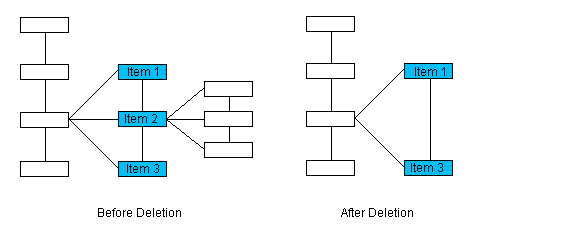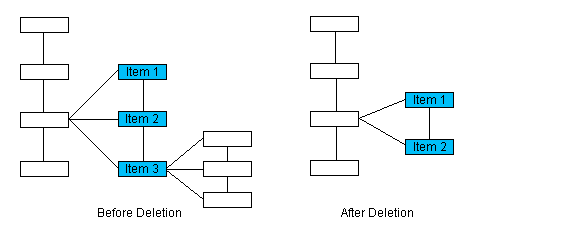
|
Available in LEADTOOLS Medical Imaging toolkits. |
LDicomDS::DeleteKey
#include "ltdic.h"
L_VOID LDicomDS::DeleteKey(pElement)
|
pDICOMELEMENT pElement; |
/* pointer to a DICOMELEMENT structure */ |
Deletes the specified key element from the Dicom Dir Data Set.
|
Parameter |
Description |
|
pElement |
Pointer to a DICOMELEMENT structure that contains the key element to delete. |
Returns
None.
Comments
When a key element is deleted using this function, all offspring of the key element (both key element children and non-key element children) and all their respective children are also deleted.
Below are illustrations of this:
For the sake of these illustrations, the order of siblings is top to bottom.
Please note that the numbering of the items of interest is arbitrary, and does not imply order.
In this illustration item 2 will be deleted. If any of the children of item 2 had children, these would be deleted also.

In this illustration item 3 will be deleted. Again, if any of the children of item 2 had children, these would be deleted also.

Please note that key elements should not be deleted using LDicomDS::DeleteElement. Deleting a key element using LDicomDS::DeleteElement will not delete any child key elements, but will delete information that references the child key elements.
For more information about key elements, refer to Working with Basic Directory Key Elements.
Required DLLs and Libraries
|
LTDIC For a listing of the exact DLLs and Libraries needed, based on the toolkit version, refer to Files To Be Included With Your Application |
See Also
|
Functions: |
|
|
Topics: |
|
|
|
How to Disable the Automatic Loading of the default DICOM IOD Table |
Example
For an example, refer to LDicomDS::InsertKey.